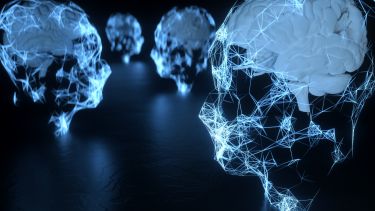Scientists from the National Institute for Health Research (NIHR) Sheffield Biomedical Research Centre at the University of Sheffield have discovered a loss of cells that use dopamine – a neurotransmitter that has a number of functions including regulating movement and emotional responses – may cause the part of the brain responsible for forming new memories to function less effectively.
The findings could revolutionise screening for the early signs of Alzheimer’s disease – which affects more than 520,000 people in the UK – changing the way brain scans are acquired and interpreted as well as using different memory tests.
Professor Annalena Venneri, from the Sheffield Institute for Translational Neuroscience (SITraN) at the University of Sheffield, is the lead author of the study. She said:
Our findings suggest that if a small area of brain cells, called the ventral tegmental area, does not produce the right amount of dopamine for the hippocampus, a small organ located within the brain’s temporal lobe, it will not work efficiently.
The hippocampus is associated with forming new memories, therefore these findings are crucial to the early detection of Alzheimer’s disease. The results point at a change which happens very early on, which might trigger Alzheimer’s disease.
This is the first study to demonstrate such a link in humans.
Anna Venneri, Professor of Clinical Neuropsychology
Department of Neuroscience | University of Sheffield
Professor Venneri and fellow lead author Dr Matteo De Marco acquired 3Tesla Magnetic Resonance Imaging (MRI) scans on 51 healthy adults, 30 patients with a diagnosis of mild cognitive impairment, and 29 patients with a diagnosis of Alzheimer’s disease. 3Tesla MRIs are twice the normal strength of normal MRI scans generating the highest quality images.
The results showed a key link between the size and function of the ventral tegmental area, the size of the hippocampus and the ability to learn new material.
“More studies are necessary, but these findings could potentially lead to a new way of screening the elderly population for early signs of Alzheimer’s disease, changing the way brain scans are acquired and interpreted and using different memory tests,” said Professor Venneri who is also an Honorary Consultant at Sheffield Teaching Hospital NHS Foundation Trust.
“Another possible benefit is that it might lead to a different treatment option with the potential to change or halt the course of the disease very early, before major symptoms manifest.
“We now want to establish how early alterations in the ventral tegmental area can be seen and also test whether these alterations can be counteracted with treatments already available.”
The results of the study are published today (27 March 2018) in the Journal of Alzheimer’s Disease.
This study has been completed at the NIHR Biomedical Research Centre (BRC) in Sheffield which is dedicated to translational neuroscience for chronic neurological disorders. The Centre was launched in April 2017.
The NIHR Sheffield Biomedical Research Centre is a research partnership between the University of Sheffield and Sheffield Teaching Hospitals NHS Foundation Trust, dedicated to improving the treatment and care of people living with chronic neurological disorders.

